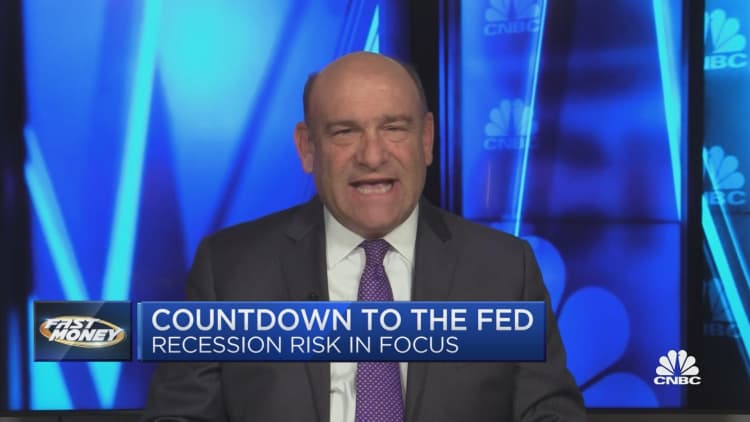The Federal Reserve will likely "increasingly err on the side of hawkish" in its approach for the remainder of 2022, says Moody's Analytics' chief economist Mark Zandi.
The Fed is widely expected to raise interest rates by a quarter point Wednesday, which would mark its first interest rate hike since December 2018. It also reflects a significant departure from the easing put in place to aid the economy through the pandemic.
The expected rate hike reflects "where inflation is, where inflation expectations are, and just given the strength of the economy and a job market that is rip roaring," Zandi said. The Fed's decision is further compounded by uncertainty around the impact of Russia's invasion of Ukraine, and further supply chain disruptions.
"You add all that up, it says the Fed has to normalize interest rates quickly, and I think at this point more quickly than they think, at least in terms of their last forecast, and maybe even more quickly than what the markets think at this point," Zandi said.
Nearly half of the respondents to the latest CNBC Fed Survey said they see the central bank hiking rates five to seven times this year. While the survey shows that the rate hike cycle is seen ending at a peak fund rates of 2.4%, half of all respondents said they believe the central bank may have to raise rates above neutral to get control of inflation.
Zandi said there could be worries of stagflation, but he believes the Fed would "short circuit that before we actually get stagflation. I don't think they'll tolerate stagflation because they know based on historical experience that if we get into that scenario, we'll ultimately suffer a recession."
CNBC Fed Survey respondents see the probability of a recession occurring in the U.S. at 33% in the next 12 months, up 10 percentage points from the Feb. 1 survey.
Recent action in the bond market showing the spread between the two-year and 10-year Treasury bonds narrowing stoked fears of a yield inversion, which has been a recession signal in the past.
At this point, Zandi said the fixed income markets are saying that the "number one problem here that they've got to resolve is high inflation, inflation expectations. But doing that without breaking the economy, pushing it into a recession is very difficult ... right now, the bond market is signaling a high probability that the Fed missteps and fails."
"I don't think the market is signaling yet a recession but they're thinking along the same lines that I am – that it's going to be very difficult for the Federal Reserve to land the plane on the tarmac given all the things that are going on and all the things they have to navigate."
That uncertainty was certainly noted by Federal Reserve Chairman Jerome Powell in his appearance before Congress on March 2.
"Making appropriate monetary policy in this environment requires a recognition that the economy evolves in unexpected ways," Powell said. "We will need to be nimble in responding to incoming data and the evolving outlook."






